Best hyacinth varieties – 15 seasonal bulb choices that will fill your home and yard with heavenly scent
When it comes to the best hyacinth varieties, we are spoilt for choice. These bulbs are great performers in their first season, indoors or out, and guaranteed flower for many years to come


As a child, I was given a toy garden with plastic flowers you could push into holes in a board. Not the most sustainable of gifts, it fell well short of real gardening, but I’ve never forgotten its tiny hyacinths.
Back then, everyone I knew planted hyacinth bulbs in bowls of ‘fibre’ to place in a cool dark spot and force into flower for indoor midwinter color and scent, making them one of the best bulbs for Christmas flowering. Also popular were specially designed hyacinth vases, with a space for the bulb to sit at the top, so you could watch the roots grow down into water.
These are by no means a modern invention but date back to the 1700s, when hyacinths were the height of horticultural fashion. They were a great favourite of Madame de Pompadour, the famous mistress of King Louis XV. In 1759 she enjoyed 200 hyacinths grown indoors ‘on glasses’. Antique hyacinth vases and decorative pots are now collectable items.
For a good display, plant hyacinth bulbs in decent light with their bases 6-8in deep and about 6in apart.
With a rich history, a palette of gorgeous colors, and carrying and unmistakeable scent, surely the heavenly hyacinth is due another revival?
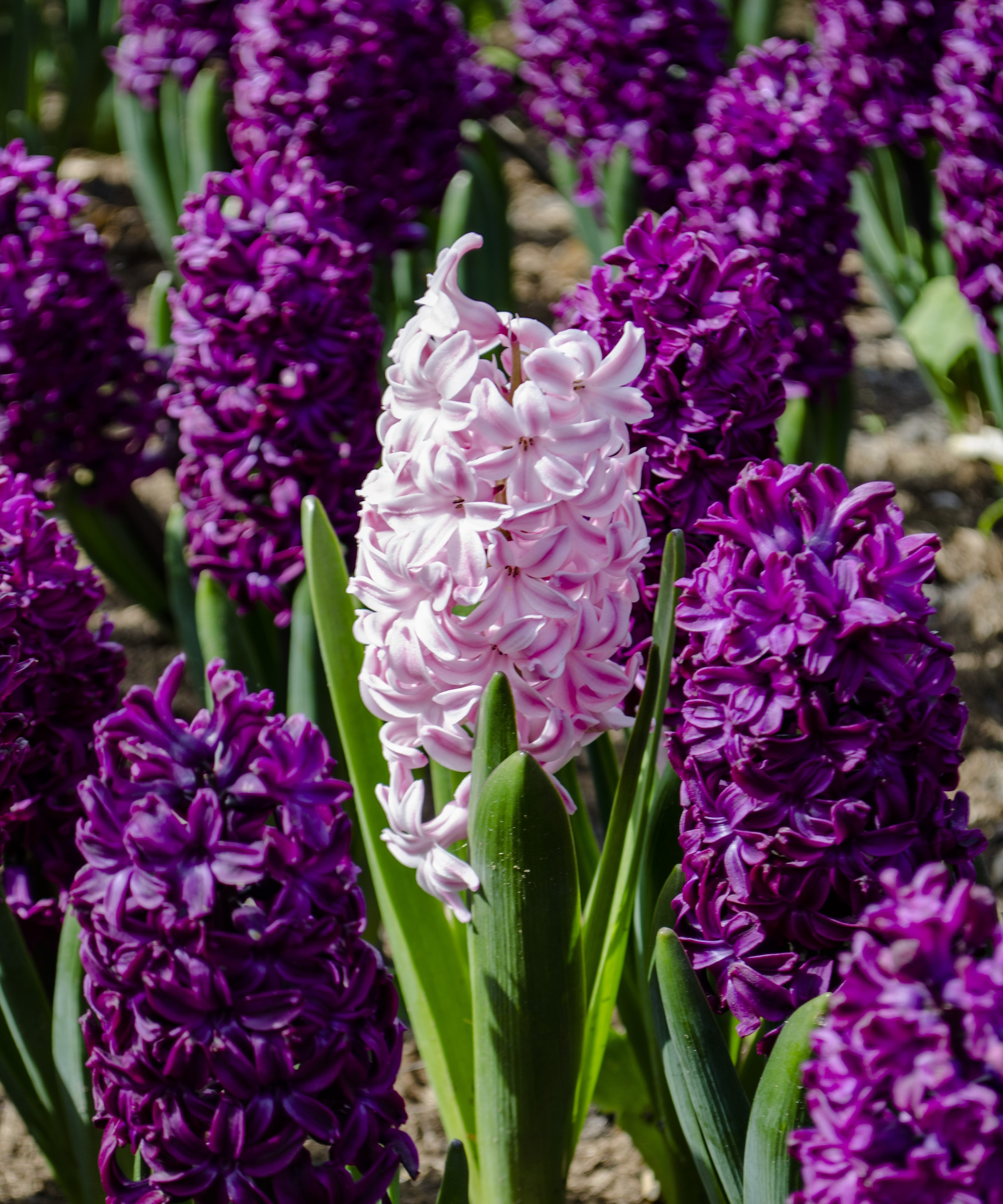
15 of the best hyacinth varieties
We are spoilt for choice when it comes to the best hyacinth varieties. Here are 15 of the finest, chosen to show the range of colors available - and some with double blooms.
Aiolos
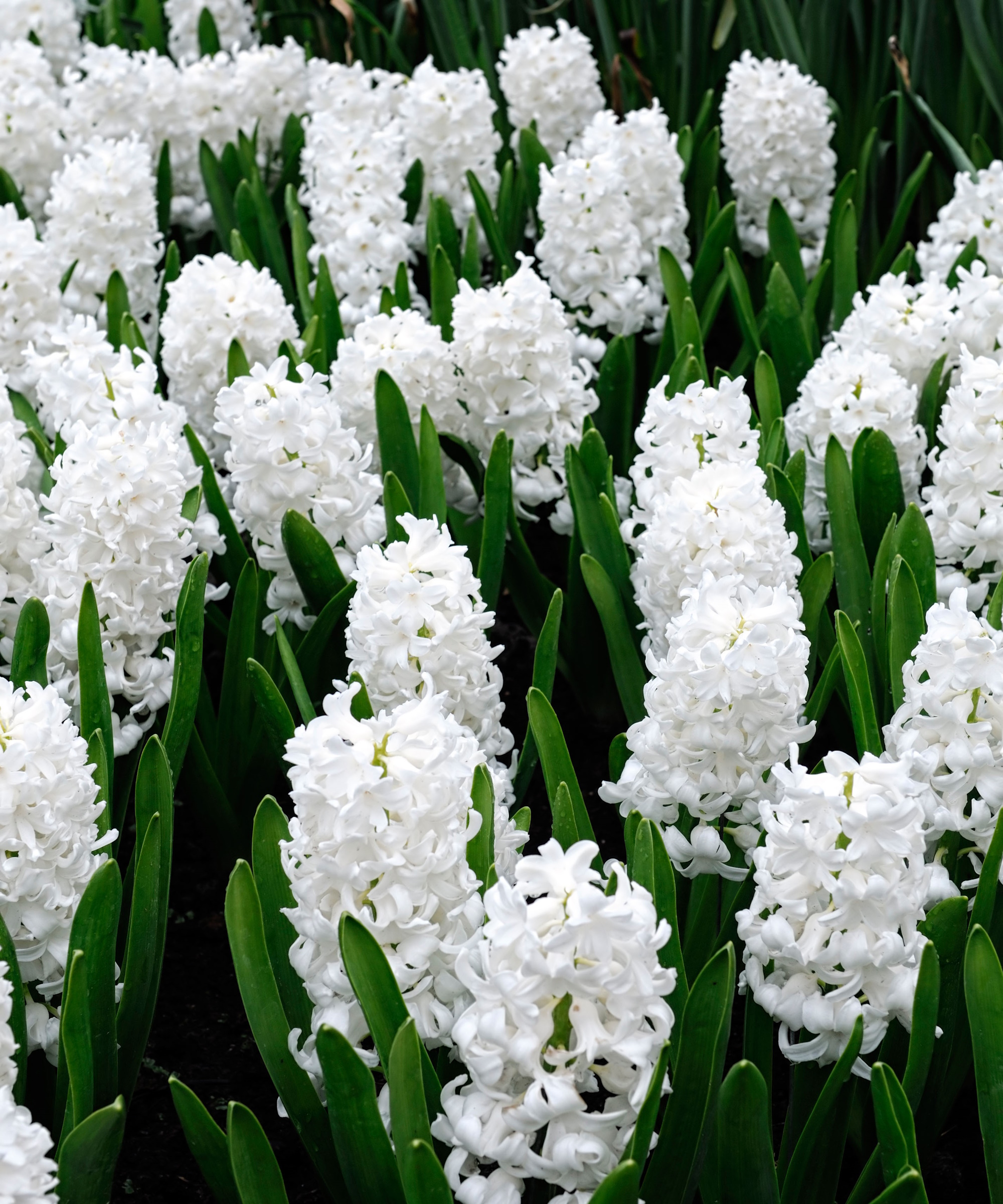
The combination of glossy, strap-shaped rich green leaves and fragrant pure-white bells is appealing. These would be an excellent choice for the spring display of a white-themed border, alongside silvery foliage from Senecio cineraria ‘Silver Dust’ in milder regions.
Design expertise in your inbox – from inspiring decorating ideas and beautiful celebrity homes to practical gardening advice and shopping round-ups.
For colder gardens, choose white-flowered Siberian bugloss Brunnera Mr. Morse whose leaves are splashed silver, or Pulmonaria ‘Sissinghurst White’.
Anna Marie

Expect an early display of well-filled spikes packed with waxy bells of soft, pale pink but with contrasting darker centers and ageing to a warm salmon.
Rich green leaves make a good backdrop but a sprinkling of February to March-flowering, white glory of the snow (Chionodoxa lucilliae 'Alba’) would make a pretty contrast.
Aqua
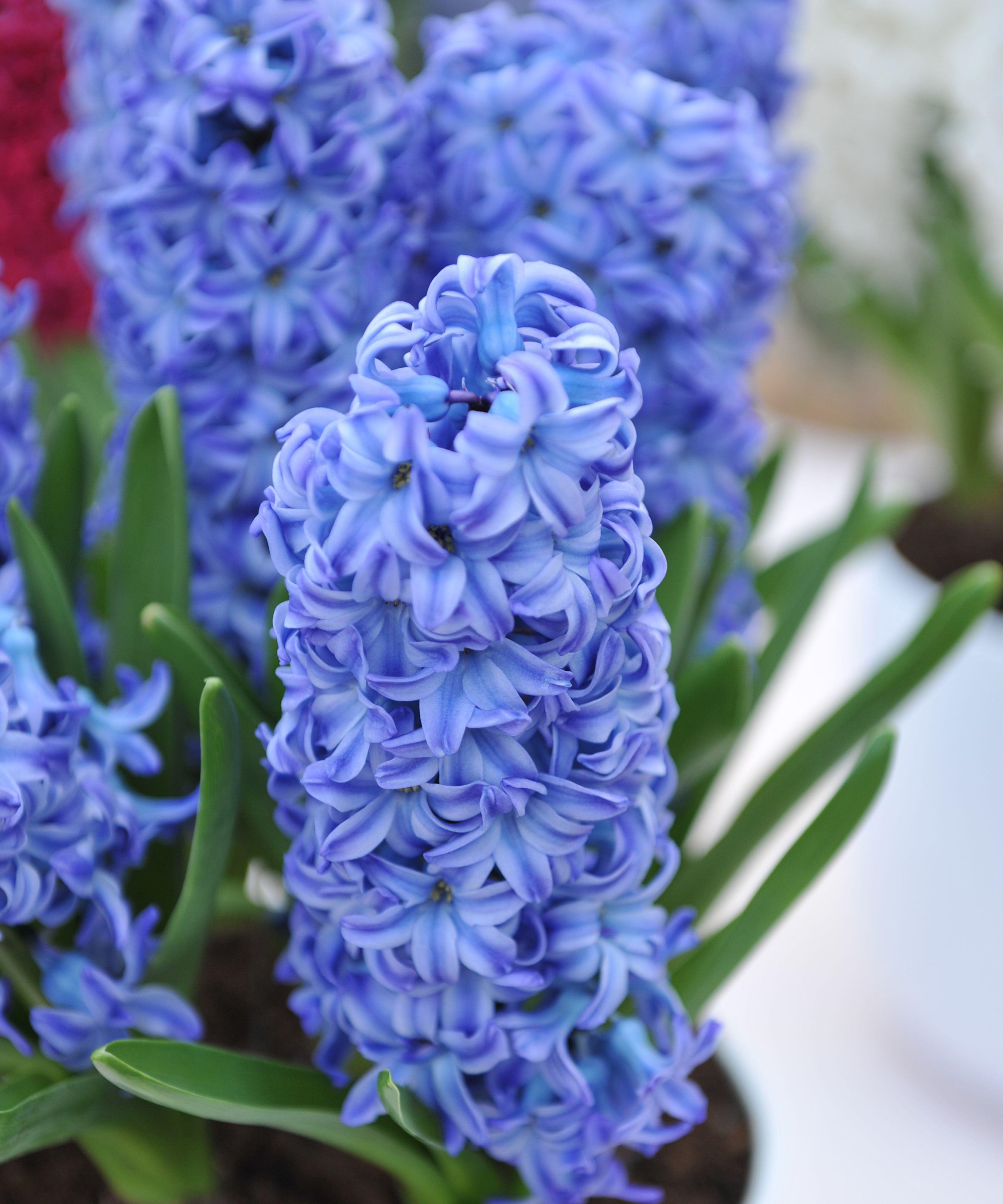
Blue suits hyacinths, probably because the fragrant blooms of wild hyacinths though small and sparse are usually pale blue. Here, the compact upright spikes are packed with bold candles of soft blue flowers surrounded by upright, grey-green leaves.
Try these in a bowl-shaped container, or planted out with shorter-growing striped squill (Puschkinia libanotica).
A similar bulb variety, 'blue star' is available at Walmart.
Blue Eyes
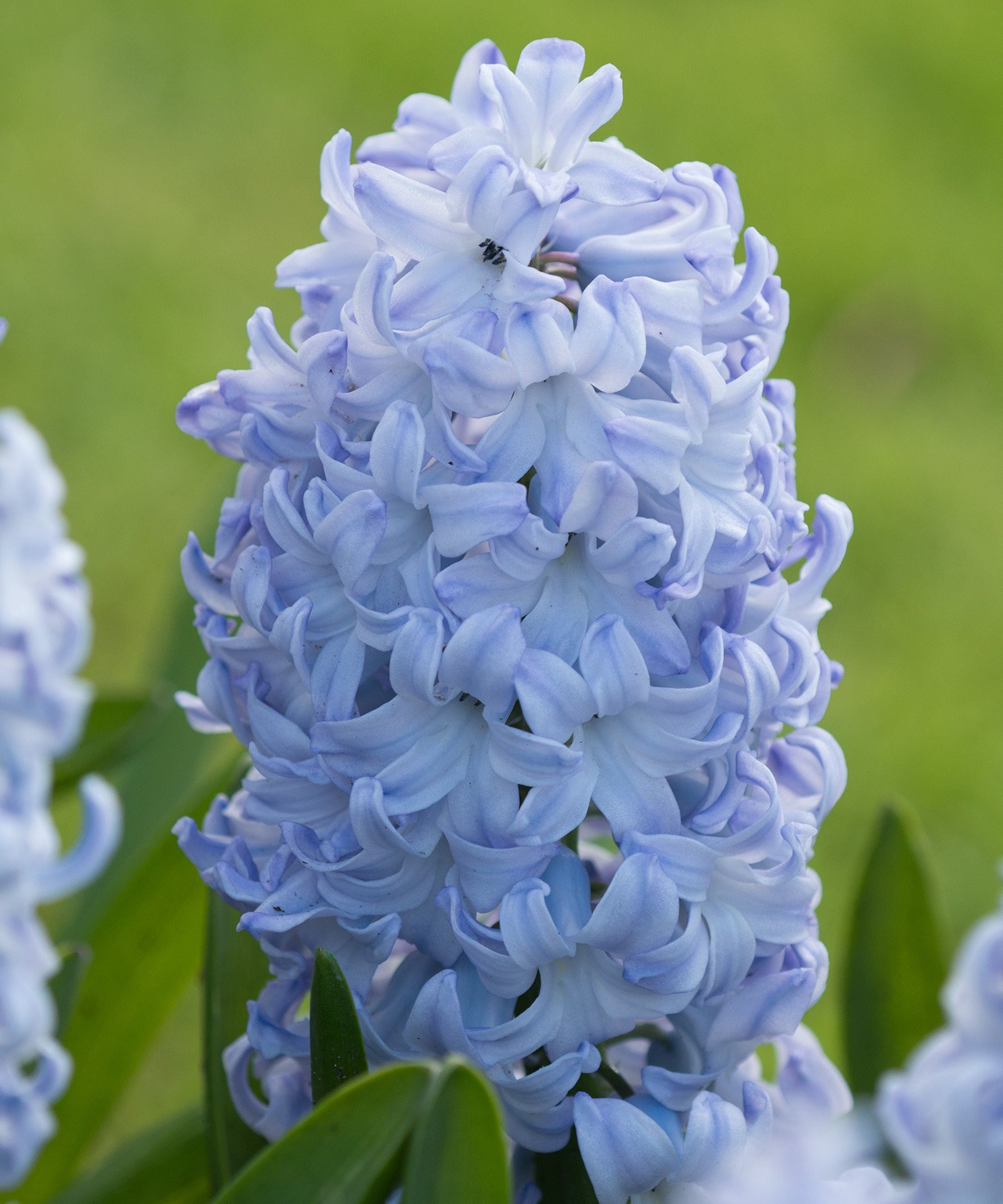
Anyone longing for icy blue hyacinth flowers should add this one to the list. Almost white on opening, the petals glisten pale blue with brighter blue markings. It is important to know how to deadhead and care for hyacinths, as doing so will give your bulbs the best chance of returning the following year.
I’d display this in pots in my cool porch where the flowers will last well. They’d look good in a window box against dark brick, mixed with the pink buttons of Bellis perennis ‘Pomponette’.
The 'baby blue' variety is similar, and available at Nature Hills.
City of Haarlem
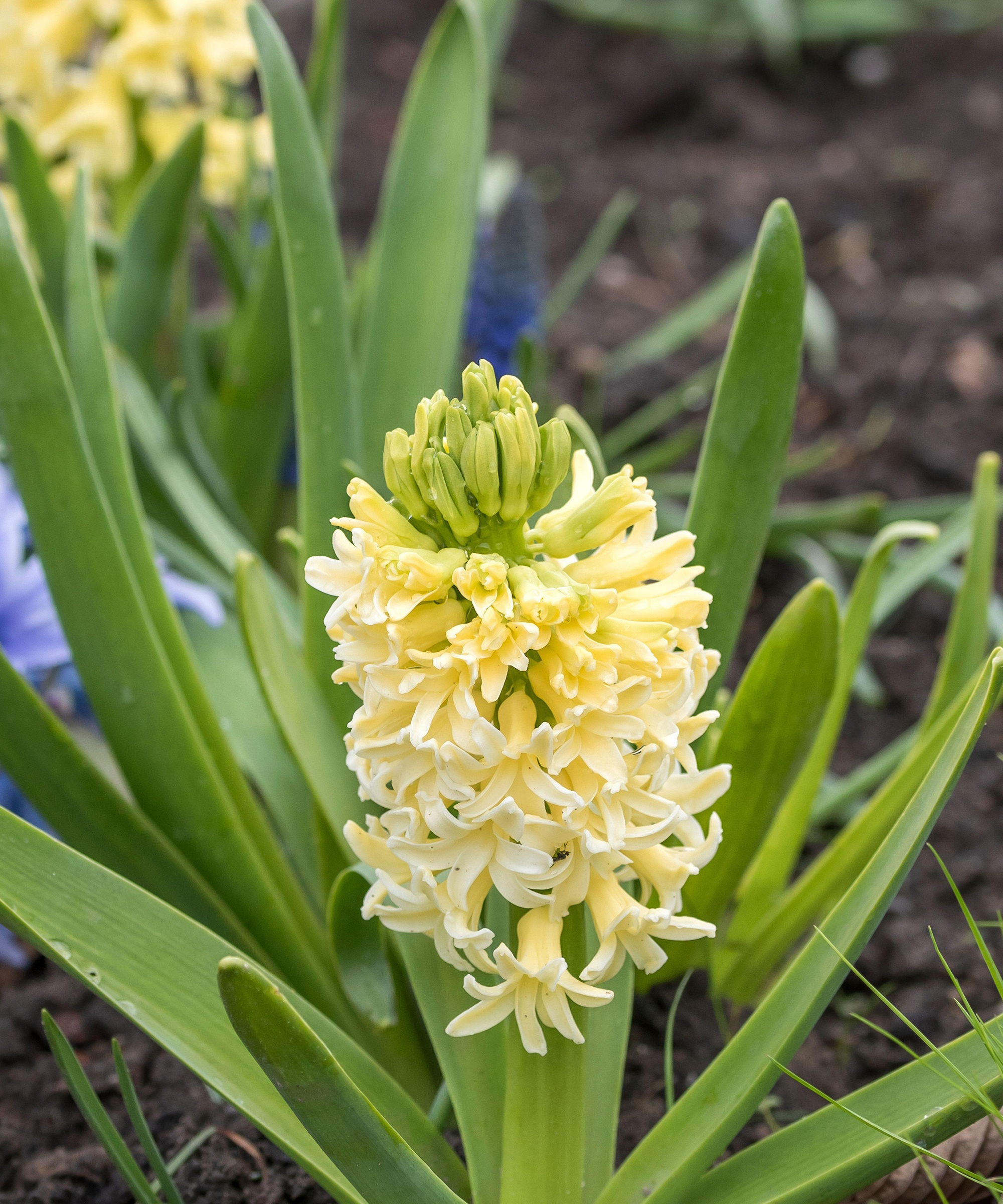
In their hyacinth listings, American Old House Gardens aptly describes the pastel shade of this hyacinth as ‘wonderfully soft, baby-chick yellow’. The generously furnished candles of bloom surrounded by neat, deep green leaves are perfect for pots, troughs or borders.
Plant corms of blue-flowered Anemone blanda for a classic combination of springtime blue and yellow. This unusual variety is available to order from Burpee.
Dark Dimension

The near black blooms of this hyacinth may not be to everyone’s taste but relief is provided by a deep purple rim to each curved petal. On opening, blooms have a purple cast but darken with age.
I would plant this and similarly dark ‘Midnight Sky’ in containers, to stand out against gold or lime green foliage.
Gypsy Queen
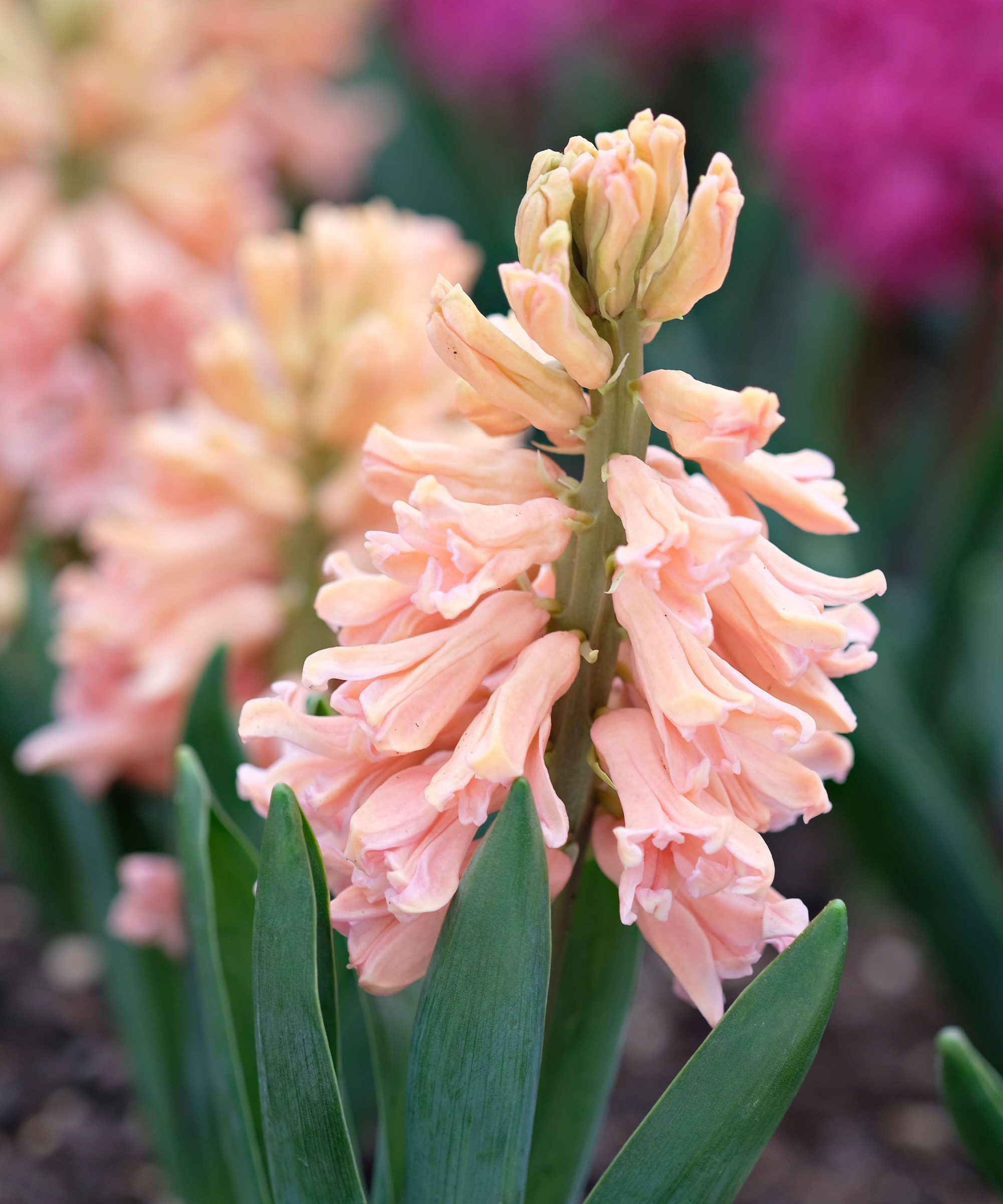
Worth growing for the warm, apricot-salmon shade of its waxy, fragrant blooms, this hyacinth will certainly catch the eye. In a container, I would team it with an underplanting of neat blue-flowered violas.
In a border, try a bold combination with Hyacinthus ‘Blue Jacket’, whose deep blue flowers should contrast well. Mix the bulbs up and plant informally.
You can shop for Gypsy Queen hyacinths at Nature Hills.
Paul Hermann
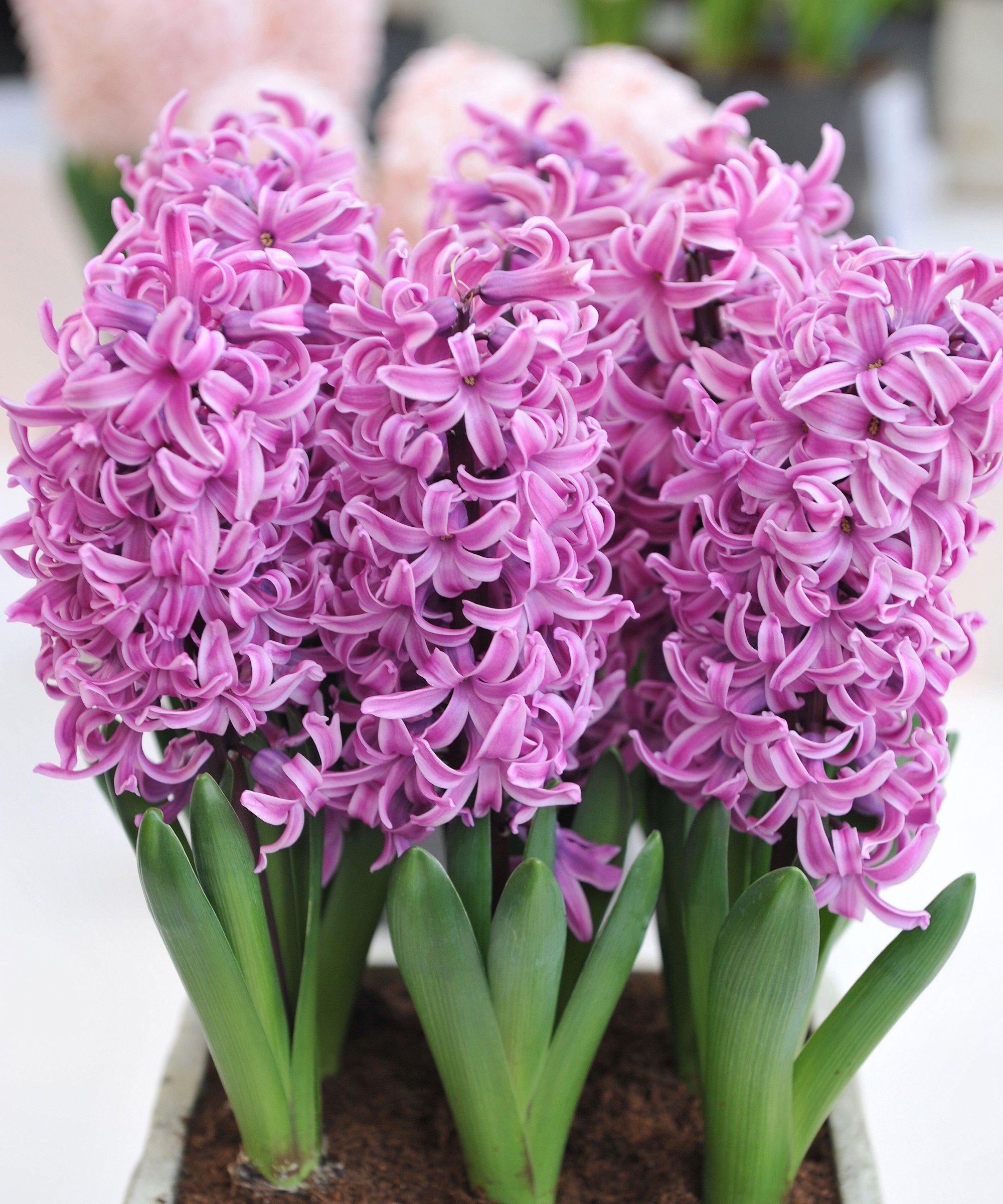
This classy, tall hyacinth opens starry flowers of purple-pink, with paler stripes along the petal edges. These contrast well with dark stems, hold well in the garden and are particularly well-scented.
Add to the color scheme with an under planting of violas or pansies in shades of pink and purple, or contrast with yellow primroses.
Pink Elephant
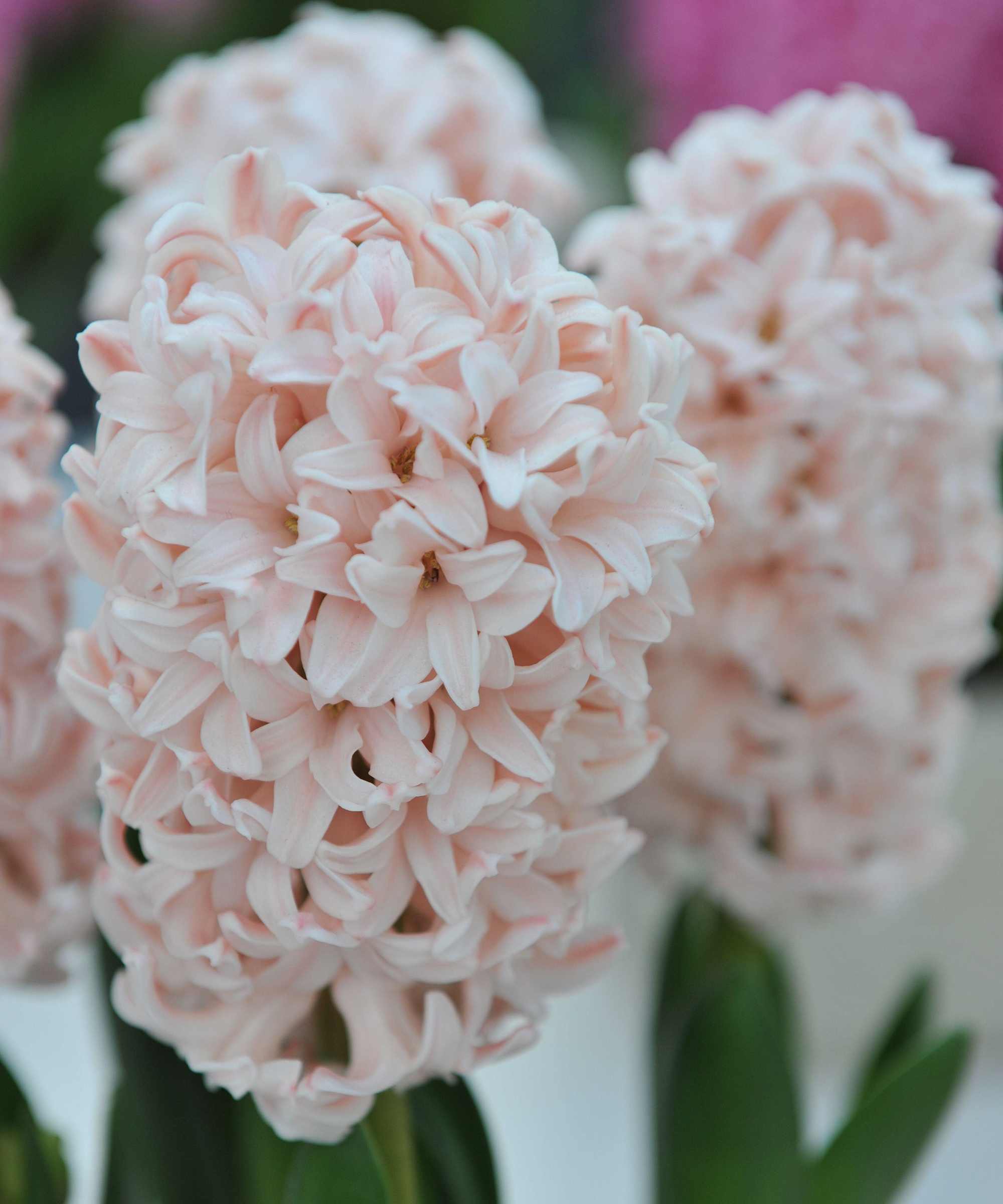
The waxy, fragrant, sugar-mouse pink blooms are of a generous size and tightly packed atop their stems with no spaces showing between.
Set against glossy, rich green leaves they stand well on their own but if you really want to make a splash, intersperse them with double red Hyacinthus ‘Hollyhock’, or tone down the display with ivory H.‘Carnegie’.
Gloria Mundi

This old cultivar is a relic of the mid 1700s, when ‘eyed’ hyacinths, whose double white blooms centered with a contrasting color, were fashionable and collectable.
For many years it was lost, but a few bulbs turned up in the 1980s. Sadly, bulbs are rarely for sale but this antique cultivar offers a glimpse into the past.
H.orientalis Anastasia

Reminiscent of old-fashioned Roman hyacinths, this modern multi-flowered hybrid is multi-stemmed. Instead of one fat candle of flowers, each bulb produces several dark stems of dainty, deliciously fragrant blue flowers against grey-green foliage.
Flowering in mid-spring, this may be less showy than some but has a dainty appearance perfect for beds and containers near windows where their scent can waft in.
H. orientalis multi-flowered White

Sending up several stems per bulb, this white-flowered multifora hyacinth is wreathed in loosely placed fragrant blooms contrasting well with stem and leaf.
Plant in a sunny spot with dainty daffodils and other spring flowers such as the vernal pea (Lathyrus vernus ‘Alboroseus’) and they should naturalize and return well from year to year.
Hollyhock
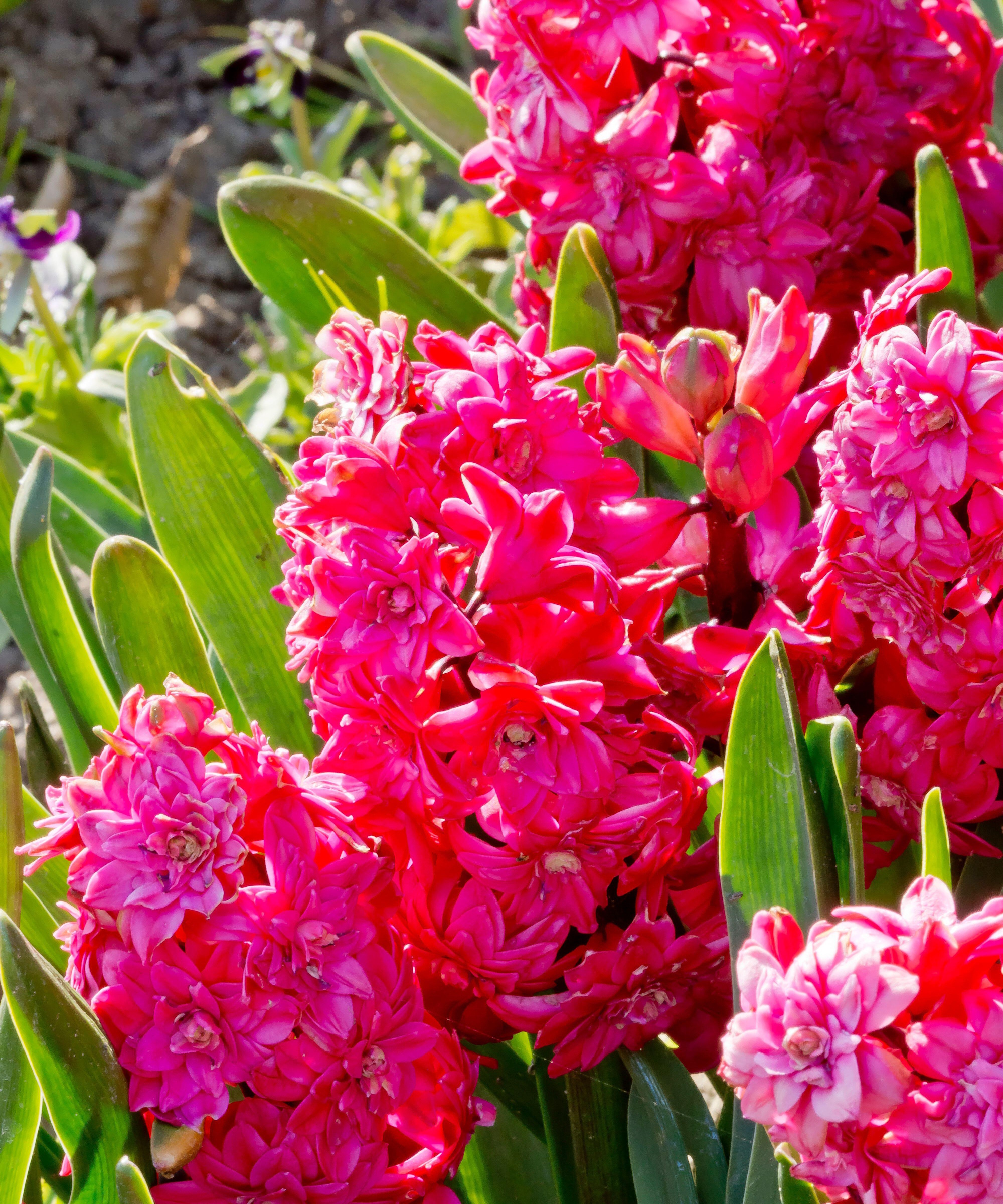
With flowers of double crimson, this eye-catching cultivar usually blooms in mid spring. I’d plant these individually in pots to amalgamate into a wide bowl for displaying in a porch, greenhouse or conservatory where their rosette-like blooms can be studied in detail.
These are good candidates for a window box, set against a pale wall and underplanted with violas. The 'jan bos' variety is similar in color, and available to buy from Nature Hills.
Snow Crystal

There is a classic freshness when white flowers open against a backdrop of deep green foliage. We see it in gardenias, stephanotis, white camellias and also white-flowered hyacinths.
I enjoy the refinement and double ivory blooms of the older cultivar ‘Madame Sophie’ but as this is becoming hard to find, well-named ‘Snow Crystal’ is a good substitute.
Royal Navy
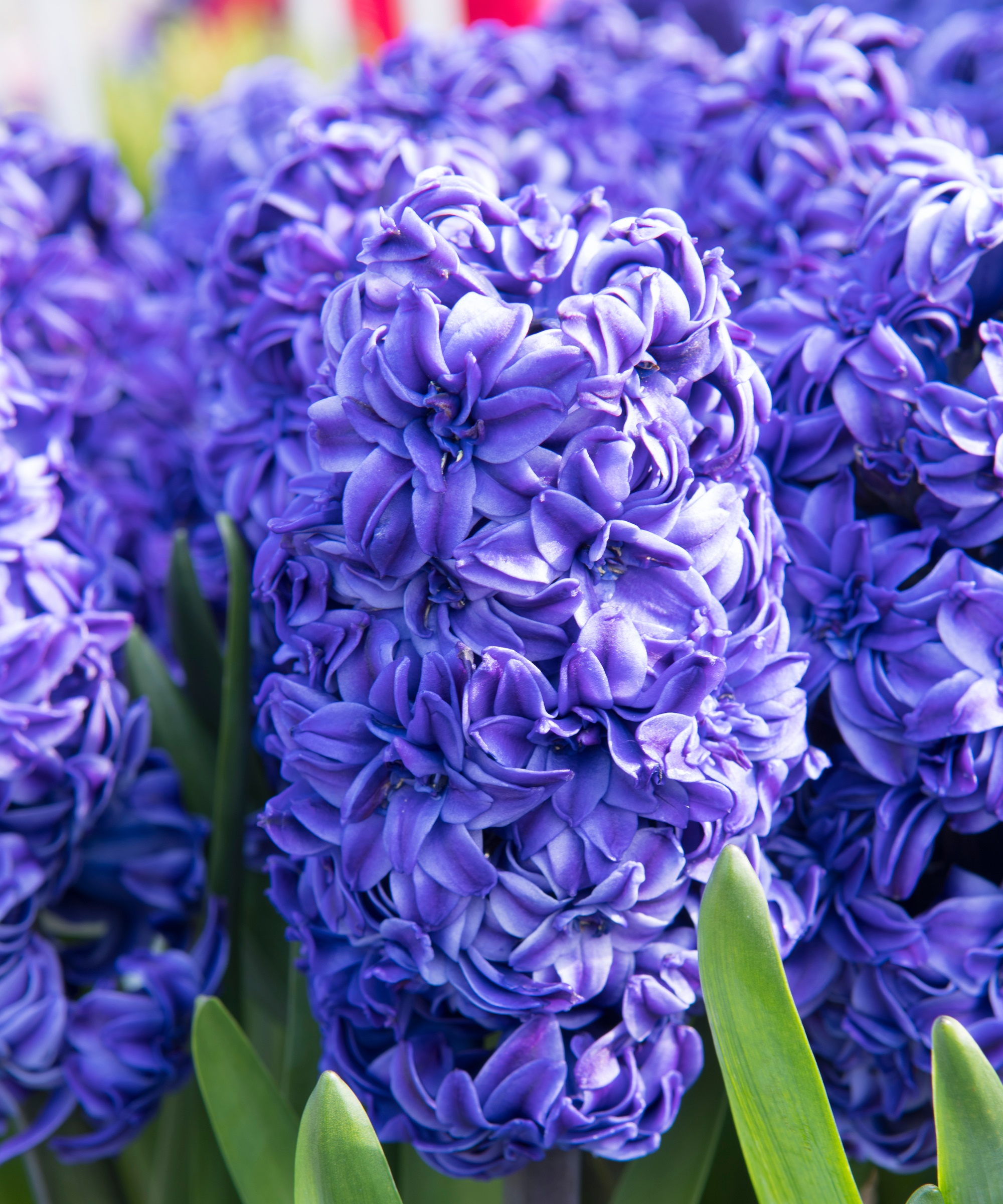
For strong hyacinth scent, this deep blue double is hard to beat and blooms towards the end of the hyacinth season. Surrounded by semi-upright foliage, the stem packed with double flowers is likely to need support as they open fully.
I would plant mine in a container, to bloom above a froth of dainty forget-me-nots.
FAQs
What is the lifespan of a hyacinth?
Hyacinths are long-lived in well-drained soil and those that bloomed indoors can enjoy a second lease of life out in the garden. After flowering, cut away the old flower stem and plant so the bulb sits 6in deep, with leaves protected from frost and allowed to die back naturally.
Those that were planted outdoors must also be allowed to die back in their own time. They will bloom again but rarely with the same abundance. This might be because they have been selected over the years for smaller, neater leaves which then struggle to build up sufficient reserves.
While in growth, a fortnightly high potash liquid feed and mulch of well-rotted compost will help. In general, hyacinths like a moist but good, well-drained soil in sun, appreciate dry summers and dislike clay soils.
Should hyacinth bulbs be dug out after flowering?
Hyacinths are such showy plants, they are mostly used to fill gaps left in fall after summer bedding and other tender plants have been removed from borders and containers.
When their flowering has finished in late spring, gardeners usually want to reclaim these prime sites by moving their hyacinths out of the way. They are useful for filling awkward narrow beds, or could be set in an allotment for cutting and settle readily as long as they are deeply planted, watered in and kept moist during dry spring weather.
Alternatively, allow the leaves to die back naturally before lifting the bulbs, drying them on racks and keeping them cool and airy before re-planting in fall.
If growing hyacinths in containers, you can plant bulbs in the yard and let nature take over. Who knows, they might come back next year.
If this heavenly hyacinth selection hasn't inspired you enough to get bulb planting, you might be interested in how to plant tulip bulbs or the best selection of narcissi to plant for a canopy of beautiful, fragrant spring blooms.

Graham Rice is a garden writer who has won awards for his work online, and in books and magazines, on both sides of the Atlantic. He is a member of a number of Royal Horticultural Society committees and the recipient of the 2021 Garden Media Guild Lifetime Achievement Award. He gardened in Pennsylvania for 20 years, but has recently returned to his native England.